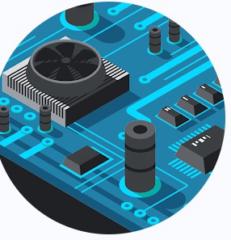Nov '24 (edited) • Entries
Glioblastoma X (Contest Entry)
Glioblastoma X: Targeted Nanoparticle Drug Delivery for Glioblastoma Treatment and Neural Regeneration
Overview:
Glioblastoma multiforme is one of the most aggressive and challenging forms of cancer. Conventional therapies, such as neurosurgery, radiotherapy, and chemotherapy are often inadequate at providing a long-term cure. The inability of current chemotherapeutic drugs to cross the blood-brain barrier and specifically target cancer cells is a significant obstacle in glioblastoma treatment. This is because the blood-brain barrier intends to prevent pathogens and harmful substances from entering the spinal cord and brain, but while doing so it also prevents large molecules from entering such as many chemotherapeutics. To solve this, Glioblastoma X focuses on designing PLGA-PEG nanoparticles to overcome these challenges. These nanoparticles are engineered to cross the blood-brain barrier, selectively target glioblastoma tumor cells, and release a combination of temozolomide and brain-derived neurotrophic factor (BDNF) in a controlled manner. The main goal of my project is to destroy the tumor while also promoting neural regeneration in previously healthy neural cells.
How It Works:
Core (PLGA): The nanoparticle’s core is made from PLGA. PLGA is a biodegradable polymer that can encapsulate hydrophobic and hydrophilic drugs. Temozolomide is hydrophobic, so the PLGA encapsulates temozolomide for a slow and controlled release. Having a controlled release of the chemotherapeutics allows sustained delivery while also minimizing the systemic toxicity rapid release can potentially bring about.
Intermediate Layer (PCL-PEG): Surrounding the core is an intermediate layer of PCL and PEG. PCL has a slower degradation rate than PLGA. This allows BDNF to be released after the nanoparticle has bound to a cancerous cell, released temozolomide, and unbound and attached to a damaged neural cell. PEG enhances the circulation of the nanoparticles because it masks the nanoparticle’s identity by preventing the immune system from recognizing the foreign “invader.”
Outer Layer (pH-Sensitive Polyacrylic Acid): The outer layer is made from a pH-sensitive polymer, known as polyacrylic acid. Polyacrylic acid can survive in the slightly basic environment of a glioblastoma cell, however, it rapidly degrades in damaged or healthy neural tissue because of its negative response to acidic environments.
GE11 Peptides and TrKB Ligands: To target the correct cells, the nanoparticles are coated with GE11 peptides which bind to epidermal growth factor receptors (EGFRs). These are commonly overexpressed in glioblastoma cells. Furthermore, TrKB ligands are also included in the surface of the nanoparticle to increase interactions with damaged or injured neural tissue.
What Makes This Different?
This dual-targeting system is unique because it doesn’t just kill cancer cells, but also helps rebuild the brain after such a traumatic disease. Temozolomide is a commonly used chemotherapeutic for glioblastoma which targets and kills glioblastoma cells, while BDNF promotes axonal regeneration and recovery in damaged neural tissues.
Why Does This Matter?
Current glioblastoma treatments frequently come with severe side effects and highly limited success. My project combines targeted drug delivery with neural regeneration and could offer a revolutionary approach to treating such a debilitating and devastating disease. Additionally, the use of FDA-approved materials like PLGA-PEG increases the potential for clinical applications. This brings us closer to improving the lives of the tens of thousands of patients diagnosed with glioblastoma multiforme. For many, being diagnosed with glioblastoma is equivalent to a death sentence, however, my project is a beacon of hope for such people. The funding from this contest would help me purchase essential materials. Currently, I hold an internship at a local research institution, known as OHSU. However, due to my age (I’m a freshman in high school) and lack of funding, they have refused to purchase cell lines which are crucial for testing the efficacy of the nanoparticles to further validate the system. If you believe in the potential of nanotechnology to improve cancer treatment and bring hope and a greater quality of life to patients with glioblastoma, then upvote this project! I will attach my project research plan if you'd like more information.
14
5 comments

skool.com/qurios
For highly motivated students 🚀
- Get top research internships
- Win science fairs
- Get a 1600/36
- Win scholarship money
- Get into HYPSM
Ads = Ban
Powered by





